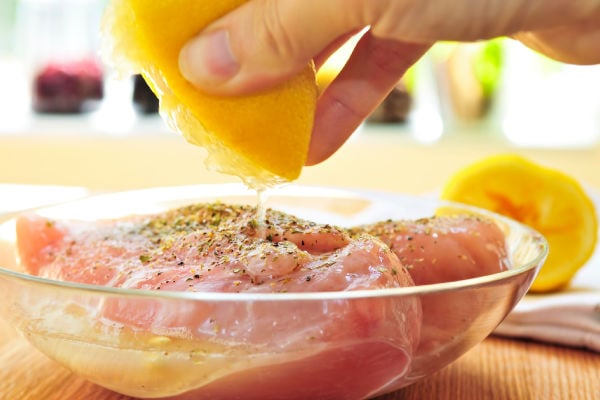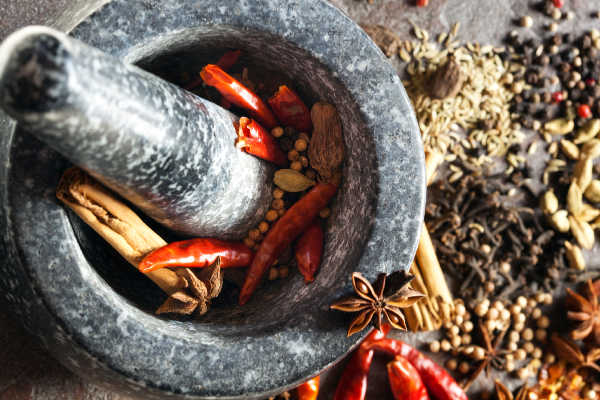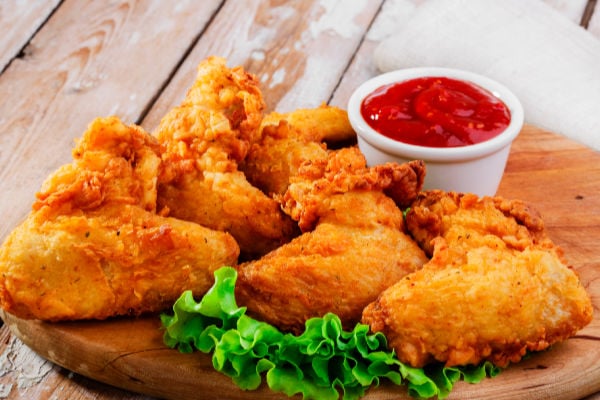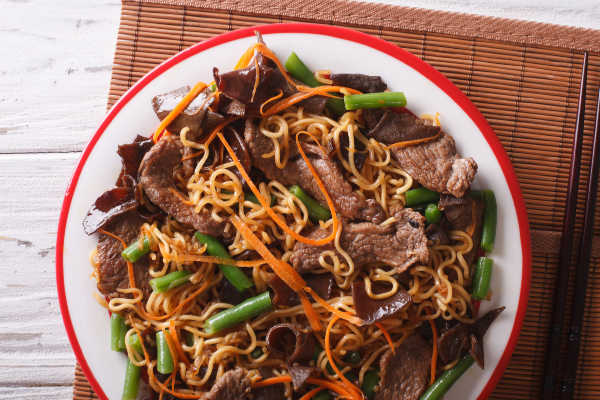Cooking a dish that tastes a little one dimensional (aka boring) can be a let-down. All that hard work in the kitchen for nothing. Use these handy seasoning tips to get every ounce of flavor from the ingredients you use. Once you've covered these off, you can say goodbye to bland food.
Are you interested in learning about how to cook tasty food without a recipe book? Take a look at our guide to aromatics. You'll learn about some of the world's greatest flavor combinations and how they can easily be used at home.
1. Deglaze whenever possible
Finished cooking that roast or frying the steak? The leftover bits in the pan are concentrated flavor. Scraping these caramelized leftovers into the bin is throwing away deliciousness. Instead, splash in some wine and stock and heat on the stovetop. This is known as deglazing. The alcohol in the wine will cook out, leaving a delicious sauce to serve with the meat. A little lemon juice and a scoop of butter will only help your finishing sauce. Now you can save money and stop buying those packet sauces.
2. Acid is your friend

Lemon juice and vinegar both brighten food.
We have all heard how important salt is in cooking, but acidity can be just as important for balancing the dish. Use a splash of lemon or vinegar to brighten a heavy dish and dial down the bitter flavors. Use acidity in moderation as it can easily make your food taste unpleasant if overdone.
3. Choose the right salt
Not all salt is made equally. You probably use the stuff in practically every meal so buy a good quality product such as fleur de sel or sea salt flakes. Kosher salt is also excellent as it is less intense in flavor than everyday table salt. The larger sized crystals are ideal for seasoning meat and they do a great job of drawing out moisture.
4. Save hard cheese rinds
Do you ever buy wheels (or wedges) of hard cheese with rinds? Parmesan or pecorino both have rinds that aren’t pleasant to eat due to the texture. Instead of tossing them in the bin, freeze them until you make a slow-cooked casserole or stock. Adding a piece will contribute mouth-watering rich and nutty flavor that is hard to replicate with other ingredients.
5. Use heat to control pepper’s bite
Add cracked black pepper to meat after it's been seared for a stronger hit of heat. If you enjoy the flavor of pepper, but don’t like it too intense, then season before searing. The temperature will tone down the spiciness of the ingredient.
6. Replace spices frequently

Old spices lose their flavor and need to be replaced.
Spices last for years without going off, but their flavors diminish quickly. This is especially true if they’re exposed to sunlight or heat. To get the best flavor from spices, use them well within their expiry dates. Freshly ground spices are your best option if you have a spice mill or can spare the time to work that mortar and pestle.
7. Spices are delicious toasted
Indian cooks have known this for centuries, and love to toast their spices at the start of the cook. This step releases the aromas and natural oils and adds incredible depth of flavor to a meal.
8. Give garlic and onions a soak
Adding flavorful minced garlic or onion to a salad dressing or vinaigrette is an excellent way to dial-up the taste. Before combining all the ingredients, soak the onion in vinegar for 10 minutes. This step takes the edge off the bitey taste of onions and garlic. You aren’t wasting any ingredients because the vinegar is used in the dressing anyway.
9. Consider temperature when seasoning
Did you know that the colder foods get, the harder it is for us to perceive their taste? If you are serving chilled food, it will require additional seasoning. The best option is to season before chilling using the amount you’d normally use on the food. Then, just before serving, taste test and add more salt and pepper as required.
10. Create more than one texture

A crispy outside and tender inside is delicious.
Texture plays a big part in enhancing the flavor of food, and some food, like chicken wings, are best cooked tender on the inside and crunchy on the outside. There are various ways to achieve this texture, and temperature plays a big role in the process. Whether you’re deep-frying or sautéing, the temperature needs to be high enough that the exterior gets its coating before over-cooking the inside. Of course, if the temperature is too high, the inside will be uncooked with a burnt outside.
11. Brown food to enhance the flavor
No discussion of improving food’s flavor would be complete without mentioning the Maillard reaction. When food browns, the structure of the carbohydrates and amino acids change in the food being cooked. In cooking speak, it means you get a lovely caramelized exterior to your food. To appreciate the Maillard reaction’s importance in cooking, all you need to do is imagine your perfect steak. Is it browned on the outside, or a limp, grey looking piece of meat? If you chose the first then you’re in the majority.
12. Add herbs when it counts
There are two types of herbs, and each should be added at the right time. Delicate herbs like basil or cilantro lose flavor and color quickly, so it’s important to add them at the end of the cook. Hardy herbs like marjoram and rosemary can withstand heat and release their flavors slowly into food, so add them at the start of cooking. Be sure to read our guide on how to preserve herbs if you've got an excess in the garden.
13. Use citrus zest
The best aroma is found in the peel so make use of it by zesting them. Zest will add a surprising boost of flavor to lemon curd, ice cream, tarts, and even fish. If you only need the juice for a recipe, then peel the fruit before using it and freeze the peel for later use.
14. Add some umami goodness
Umami is a savory taste that makes meat dishes taste better than they did already. The Italians have long known that adding one or two anchovies to a pasta sauce won’t make it fishy; instead, the fish adds a tasty hit of salty umami goodness. Splash some Worcestershire sauce into your next burger mix, or use soy sauce in a slow-cooked casserole.
15. Increase meat’s surface area

Smaller pieces of meat allow for greater caramelization.
Getting flavor into meat is easier when you’re dealing with smaller pieces, compared to a large chicken breast. Not only can you coat more surface area with seasoning, but you also expose more of the meat to the pan. More exposure leads to increased caramelization and flavor.
16. Salt consistently
It’s easy to add a sprinkle of salt at the end of cooking. But a better option is to add salt at the start, then add a little more as the food cooks. This allows time for the flavors to develop and will result in a better-tasting dish. Be careful not to over salt, and taste test frequently.
Table of Contents
Summing up
Food that’s packed with taste is the best and these tips for improving flavor may give you the edge you need in the kitchen. If you enjoy cooking tips then you may also want to check out our 35 kitchen hacks that will make your life in the kitchen a lot more productive.
Do you have a secret tip for improving flavor that you’d like to share? Please let us know in the comments below.

Leave a Reply